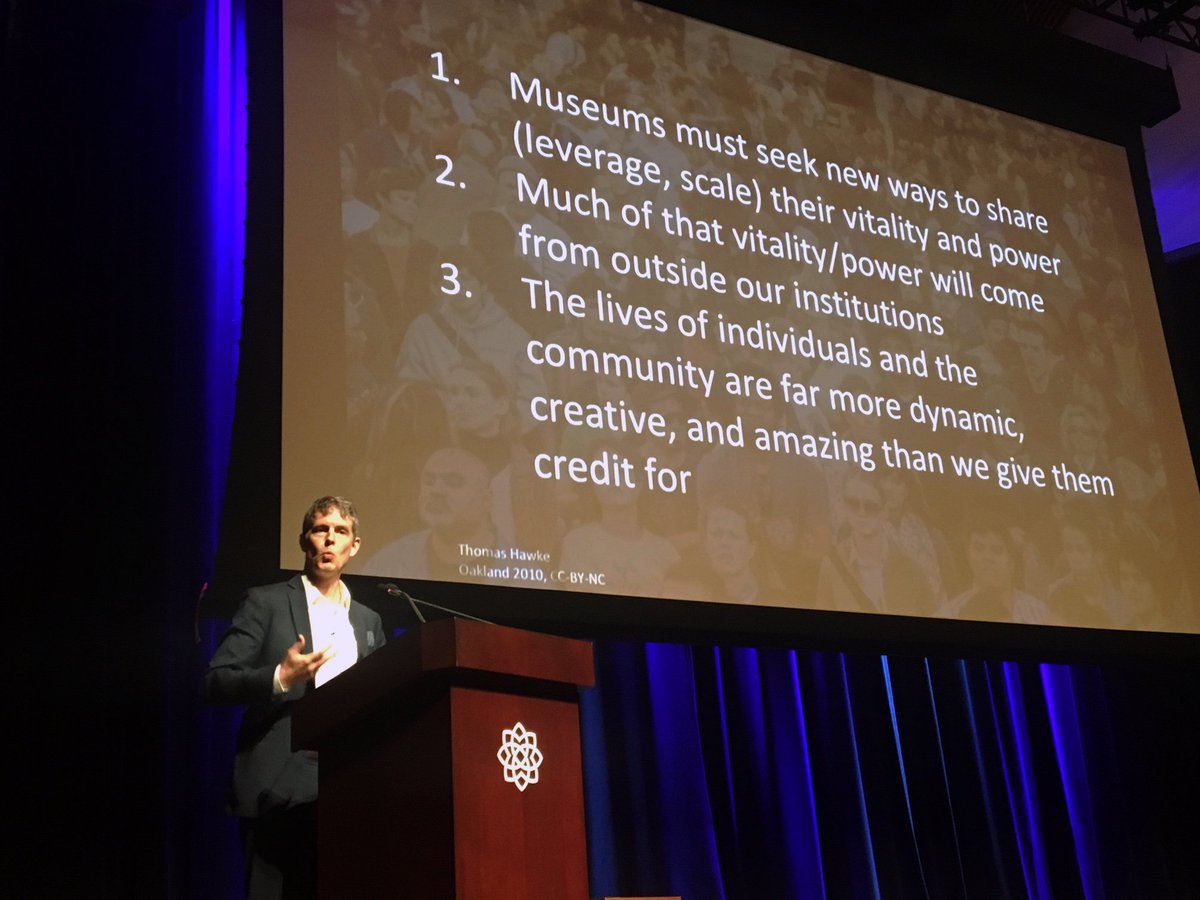BY: SAMANTHA KILPATRICK
For the inaugural edition of the #ProgramReviews column, I attended a talk called The Evolving Role Of Museums hosted by the Aga Khan Museum on May 9th, 2018. Michael Edson, co-founder of the still-forming United Nations museum, UN Live. Edson gave a lecture about the evolving role of museums for the upcoming International Museums Day, as part of the Aga Khan Museum’s Changing Perceptions Series.
Formerly director of Web and New Media Strategy at the Smithsonian, Edson gave a wide-ranging and energetic talk, where at one point he organized a rock paper scissors competition with the entire audience. I expected, at the end of this competition, for him to speak about the power of statistics, and that it is exceedingly improbable that any individual would win, but that it was inevitable that someone would. Instead, he spoke briefly about the power of play to activate learning, and then showed us this video:
He used this as a launching off point to talk about the three dimensions in which the world has shifted rapidly in scope, scale, and speed- the problems of globalization and rapid automation that are shaping the world in ways which no one, not museums, not nations, not individuals, yet understands. What then, is UN Live to become?
The goal of UN Live, as Edson explained it, is not to be an institution which would educate its visitors about the history of the UN. The museum is instead constructed around about the UN’s 17 Sustainable Development Goals for 2030, and to encourage anyone who comes into contact with the museum to go forth and make progress towards these goals in their own communities.
| The UN's 17 sustainability goals for 2030. Source. |
The challenge, as Edson framed it, was not to educate. We do not, he reminded us all, act because we have a lack of information available to us. People continue to smoke well after they know the adverse effects of smoking. The challenge of UN Live is to encourage people to engage with the goals of the UN and to embody them in their own lives and their own communities. UN Live seeks to build within people the habits of community engagement and democracy. Their role is to be the United Nations “at eye level” with the citizens of the world, and to help people understand and act on these goals in the language of everyday life.
The ways one can encounter UN Live, which Edson promises are getting equal love and attention, are the physical location in Copenhagen, its network with other public institutions all over the world, and a digital museum. Edson’s former role, as director of Web and New Media Strategy at the Smithsonian, will doubtless help him in this pursuit. Each of these, of course, will maintain as part of its mission and in every step of the design, a bridge between information and action. Part of the mission is not to ensure that every person who interacts with UN live leaves to solve a world problem, but to find, elevate, and assist the changemakers that already exist in every community. UN Live seeks to change the encounter rate of those brilliant, inspiring people we all know, from one in a million to two or three in a million, and to help those change makers, creatives, leaders to effect change more efficiently. Edson bounced back and forth from grand sweeping statements about the way the world should be, to specific steps UN Live was taking to help that change happen with such rapidity it at times gave me goosebumps.
 |
| Michael Edson, at the Aga Khan Museum. Source. |
The overwhelming feeling I had leaving The Evolving Role of Museums lecture was one of hope. Hope as a motivator, a driver, as a source of strength. I could practically feel it beating against my chest as I left. As a program host, could you imagine a better way for your attendees to leave?


No comments:
Post a Comment
Note: only a member of this blog may post a comment.